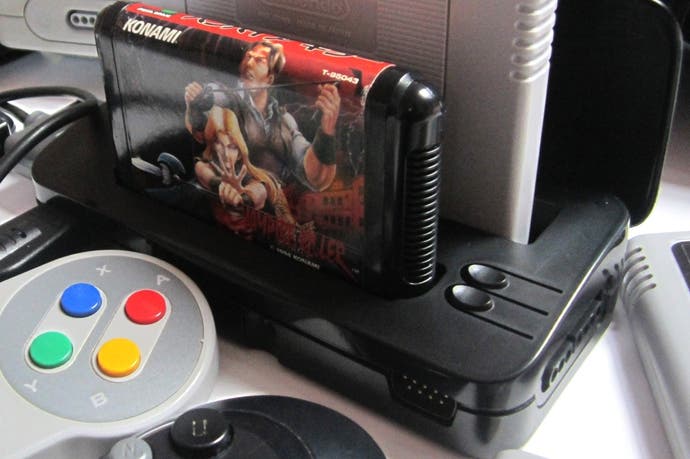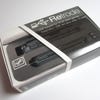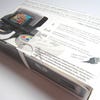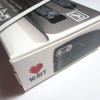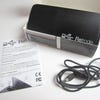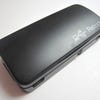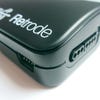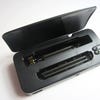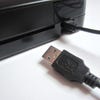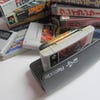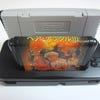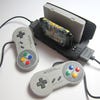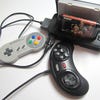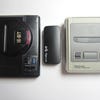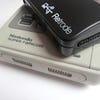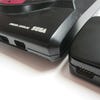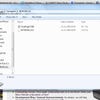Retrode 2 review
There's life in those old cartridges yet. Meet the hardware add-on that could legitimise retro emulation.
Although the topic of retro emulation is often treated with disdain by purists who see it as unethical, the truth is that replicating an old system on your PC actually delivers a raft of significant benefits. You can overcome legacy AV standards and get a crystal-clear, pixel-perfect image on your HDTV via digital or VGA connections, or utilise save states to make those tortuous sessions of Super Star Wars all the more bearable. It's easier to tailor the experience to suit your own personal taste and you can even perform peripheral tasks such as using video capture programs to record your performance or taking screenshots.
Much of the negativity surrounding retro emulation stems from the fact that the use of such a program implies the support of piracy, as most players resort to shady ROM download sites in order to service their pangs of rose-tinted nostalgia. Thankfully, the Retrode 2 is here to solve this rather troubling moral conundrum; it allows you to play your original SNES and Mega Drive cartridges on a selection of PC or Mac-based emulators.
The original Retrode was essentially a device which allowed you to rip the data from your cartridges to create functioning ROMs, but this updated variant removes the temptation to tread on potentially dodgy legal ground by instead turning the code on the cartridge's ageing circuit board into data that your PC can interpret directly from the source media. This means you can play them without having to drag-and-drop the files to your computer - although collectors who wish to create digital backups of their games will be pleased to know that such a procedure is still an option with this device.
Connecting to your computer via a mini USB cable, the Retrode 2 simply acts like an external drive, offering up SNES/Super Famicom (.sfc) or Mega Drive/Genesis (.bin) files which are loaded into the relevant emulator directly from the device itself. Region encoding is irrelevant, as most emulators toggle between NTSC and PAL standards. It even grants access to your battery backup save game files, allowing you to preserve the hard work you invested into Secret of Mana when you were still attending college more than a decade ago.
"Connect the Retrode 2 to your computer via USB and cartridges are exposed as files accessible by the most popular retro emulators."
When the batteries in these carts fail (if they haven't done so already) then you're going to lose it all, so it's nice to have a method of saving your exploits from becoming lost in the ether. The Retrode 2 even allows you to upload save game files from your PC to a cartridge (once you've disabled the read-only protection, of course), which means you could effectively restore your progress to another copy of the same game, should you find reason to do so.
Compared to the original Retrode - which was very much a proof of concept rather than an item intended for mass-production - the Retrode 2 looks and feels like the finished article. The curved plastic casing is subtle yet appealing and the drop-down flap which protects the cartridge ports when they're not in use suggests a very happy portable future for the device. Given the plug-and-play nature of the Retrode 2, it's not beyond the realms of possibility that some buyers will carry it around with them - just in case they happen to visit a friend or relative who fondly recalls Streets of Rage and wants an impromptu slugfest on their desktop computer.
Allowing you to harness the power of your existing retro collection is one thing, but the Retrode 2 goes one step further by offering support for the original SNES and Mega Drive control pads, rounding off that authentic experience. There are two ports for each system on the device, and although it can sometimes be tricky and time-consuming to manually configure the button arrangement for each pad in the emulators themselves, the rewards are immense. Experiencing emulated software with the pad it was intended to be played on cannot be underestimated; Mario Kart simply isn't the same without the SNES pad's precise shoulder triggers and tight controller, while the iconic fascia button layout is essential when tackling titles like Super Smash TV, with its own distinct interpretation of twin-stick controls.
"All modern emulators ignore the region protection of the original console hardware, meaning that the Retrode 2 works with games from anywhere in the world."
Likewise, the familiar Mega Drive layout of Special (A), Attack (B) and Jump (C) is so common across many different Mega Drive games that it is practically ingrained on the consciousness of Sega fanboys the world over; trying to adapt your brain and digits to any other arrangement is both discomforting and confusing, but with the Retrode 2 this isn't an issue. Not only can you enjoy your old games, but you can play them with the very same pad you used back in your youth (although we dare say you might need to give it a quick clean beforehand).
According the creator of the Retrode 2, it also works on Android devices. We tested this claim with several examples - the Nexus 4, Motorola Xoom, Andy Pad Pro and Samsung Galaxy Note 2 - and the only one which correctly acknowledged a USB mass storage connection was the Andy Pad. The functionality is there - which is fantastic - but don't immediately assume that your tablet or phone is going to support it. The fractured nature of the Android hardware market means that such inconsistencies are bound to occur, sadly. It's also worth noting that the Retrode 2 also functions with jailbroken iPads.
There are other issues to consider when approaching the Retrode 2 that go beyond connectivity with Android, however. You're naturally at the mercy of emulator compatibility; not all games are guaranteed to play, although the more advanced pieces of software now boast near-perfect software support. We couldn't get monochrome Game Boy games to play using the Super Game Boy peripheral (the emulators we used detected the Super Game Boy unit itself, but not the Game Boy cartridge loaded into it) and Pier Solar - WaterMelon's 2010 Mega Drive RPG - comes up as a file format which our Mega Drive emulator was unable to recognise. Still, these are very minor infractions when you consider how robust and straightforward the overall experience is.
"This isn't a mainstream product - it's aimed at those who've held onto their vast SNES/Mega Drive titles over the years. It's not exactly cheap either at $90/£55."
Possibly the biggest sticking point is going to be the price of the unit; it currently retails for $89.99 (around £55), which places it outside the realm of impulse purchase territory for all but the most dedicated retro players. The figure is largely justified - these devices are being produced by enthusiasts who lack the massive reserves of cash enjoyed by established hardware manufacturers - but it presents a barrier to entry for some, especially those who see no value in eschewing the pure ROM route and using bulky cartridges - some of which now carry a second-hand value which far eclipses their original RRP.
Retrode 2: the Digital Foundry verdict
So it's not for everyone, but then the Retrode 2 doesn't claim to be a mainstream proposition. It's aimed at those who have loyally held on to their vast collections of SNES and Mega Drive titles over the years, despite the temptation to sell up in order to fund the acquisition of some grand new system. Interestingly, there are also plug-in converterswhich expand the remit of the Retrode 2 even further, allowing you to play N64, TurboGrafx-16 and even Virtual Boy software on the device.
Although some will question the wisdom of picking the Retrode 2 over original hardware, few can deny its practicality; it unlocks new potential in those dusty plastic cartridges and allows you to preserve your delicate save game data before it is lost to the mists of time. Instead of looking on in dismay as your 20-year-old Mega Drive struggles to display its RGB SCART picture on your gargantuan 56-inch HDTV, you can now give your vintage titles a new lease of life - and one which does those esteemed pixels justice.
The unit used in this review was supplied by Stone Age Gamer.
